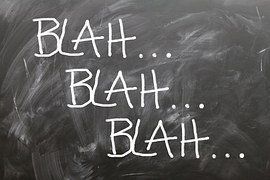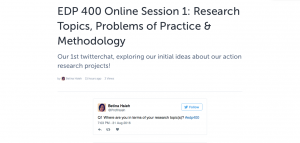I have been resisting the third exercise, Observing Multitasking, from the book Mindful Tech, for at least a month now.
At first, my resistance was grounded in the fact that I hadn’t yet started the semester and felt like my multitasking habits weren’t at their peak.
Now that I’m fully in it, however, and feeling the strain of multitasking, I’ve transitioned into a full blown refusal to look in the mirror and realize that the multitasking that I’m engaged in is a response mechanism, and not a healthy one.
Multitasking allows me to feel “responsive,” but I don’t feel productive, focused or intentional. This leaves me completely drained and unsure at what I’ve accomplished. It also puts me in a state of mind where I am no longer reflective (but, again, responsive) and in denial that I put myself into this frenzied state through overcommitment. I can’t get everything done, so I feel like I need to respond to everything immediately or I’ll be aware at how far behind I’m falling.
I guess, in a way, I have been “doing the exercise” after all, just perhaps not through video-recording my screen captures. I’m definitely more aware of all of the ways and times in which I’m switching my focus. Even in writing this blog post, although I intentionally shut off my e-mail, I’ve responded to three text messages (in two different conversations), one of which, also buzzed on my Apple Watch (distracting me twice even though I had already responded to the message on the iMessages feature on my computer); opened 3 browser tabs (2 related to the blog–pixabay for the opening picture & amazon to link Mindful Tech and one related to one of the text messages–google maps); and I’ve glanced at my phone which notified me about a tweet from a friend that’s getting noticed. It is not even 8am. I am not even technically “working” (although, because of my overcommitment and poor boundary setting, I seem to be always working). Many of these distractions are actually technically “leisure” as I’m arranging meetings with friends and family, blogging and engaging in social media practices.
Without a mindful start to my day, without an awareness of the way my day is set up to breed distractions and shift my focus, I know I will end the day frenzied and exhausted. I am already starting the day, feeling how tired this pace will make me, is making me, has made me, in the 3-4 weeks since the start of classes.
So this morning, I am admitting that the multitasking is a problem, and (re)committing to more mindfulness and intentionality in my technology use, and in life. If I can’t get it all done, it almost certainly is a sign that I’m doing too much. There is no badge of honor for a frenzied state. I am likely not even getting more done because it is hard to focus on any one thing I’m doing.
One thing at a time. One step at a time. Pushing through resistance towards greater learning.













